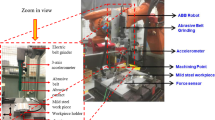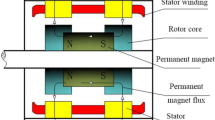Abstract
Tool condition monitoring systems play an important role in a FMS system. By changing the worn tool before or just at the time it fails, the loss caused by defect product can be reduced greatly and thus product quality and reliability is improved. To achieve this, an on-line tool condition monitoring system using a single-chip microcomputer for detecting tool breakage during cutting process is discussed in this paper. Conventionally, PC-based monitoring systems are used in most research works. The major shortcoming of PC-based monitoring systems is the incurred cost. To reduce costs, the tool condition monitoring system was built with an Intel 8051 single-chip microprocessor and the design is described in this paper. The 8051 tool monitoring system uses a strain gauge for measuring cutting force; according to the force feature, the tool monitoring system can easily recognize the breakage of the cutting tool with its tool breakage algorithm. The experimental results show that the low-cost 8051 tool monitoring board can detect tool breakage in three successive products successfully.





Similar content being viewed by others
References
Pen YL (1995) Review of end milling tool wear monitoring. Ind Machin, pp 177–183
Tlusty J, Andrews GC (1983) Critical review of sensors for unmanned machining. Annals CIRP 32(2):563–572
Moriwaki T (1993) Presentation at working group meeting. In: Proc. first workshop on tool condition monitoring, CIRP, Paris
Byrne G, Dornfeld DA et al. (1995) Tool condition monitoring—the status of research and industrial application. CIRP 44(2):541–567
Lan MS, Dornfeld DA (1981) In-process tool fracture detection. ASME J Eng Mater Tech 106(2):111–118
Emel E (1991) Tool wear detection by neural network based AE sensing. In: Control of manufacturing processes. ASME, New York, pp 425–428
Altintas Y, Yellowley Y (1989) In-process detection of tool failure milling using cutting force models. J Eng Ind Trans ASME 111:149–157
Lin JJ (1993) Monitoring of face milling wear. Master Thesis, National ChingHua University
Tseng PC, Lee CC (1994) Progressive tool wear sensing and modeling in turning operations. In: CSME, 11th national conference on mechanical engineering, Taiwan, pp 487–493
Altintas Y (1992) Prediction of cutting forces and tool breakage in milling from feed drive current measurements. J Eng Ind Trans ASME 114:386–392
Matsushima K, Bertok P, Sata T (1982) In-process detection of tool breakage by monitoring the spindle motor current of a machine tool. In: Hardt DE (ed) Measurement and control for batch manufacturing. ASME, New York, pp 14–19
Chen CC (1996) Tool wear monitoring and control on machining center. Master Thesis, National Chung Hsing University
Dornfeld DA (1990) Neural network sensor fusion for TCM. J Eng Ind Trans ASME 112(3):2119–2128
Tansel IN, Mekdeci C, McLaughlin C (1995) Detection of tool failure in end milling with wavelet transformations and neural network. Int J Mach Tool Manufact 35(8):1137–1147
Liang S, Dornfeld DA (1989) Tool wear detection using time series analysis of AE. J Eng Ind Trans ASME 111(2):41–58
Wu SM (1977) Dynamic data system: a new modeling approach. J Eng Ind Trans ASME 99(3):708–714
Pandit SM, Kashou S (1982) A data dependent systems strategy of on-line tool wear sensing. J Eng Ind Trans ASME 104(3):217–223
Dornfeld DA (1995) Sensor integration using neural networks for intelligent tool condition monitoring. CIRP, pp 219–228
Sokolowski A, Dornfeld DA (1993) Feature selection in tool wear monitoring using fuzzy logic and genetic algorithm. LMA Research Report, University of California at Berkeley, pp 91–97
Burke LI (1993) A universal neural network approach to tool wear identification. IIE Trans 25(1):16–25
Teng WC (1997) The single chip technology on tool status monitoring. Master Thesis, National Chung Hsing University
Author information
Authors and Affiliations
Corresponding author
Rights and permissions
About this article
Cite this article
Tseng, PC., Teng, WC. The design of a single-chip tool monitoring system for on-line turning operation. Int J Adv Manuf Technol 24, 404–414 (2004). https://doi.org/10.1007/s00170-003-1780-1
Received:
Accepted:
Published:
Issue Date:
DOI: https://doi.org/10.1007/s00170-003-1780-1




